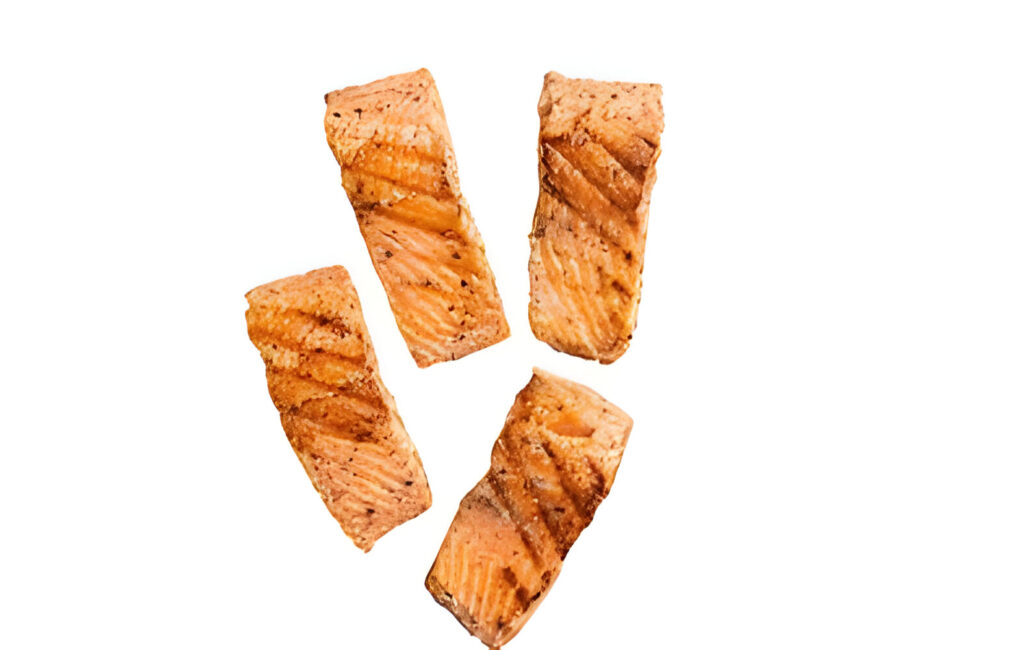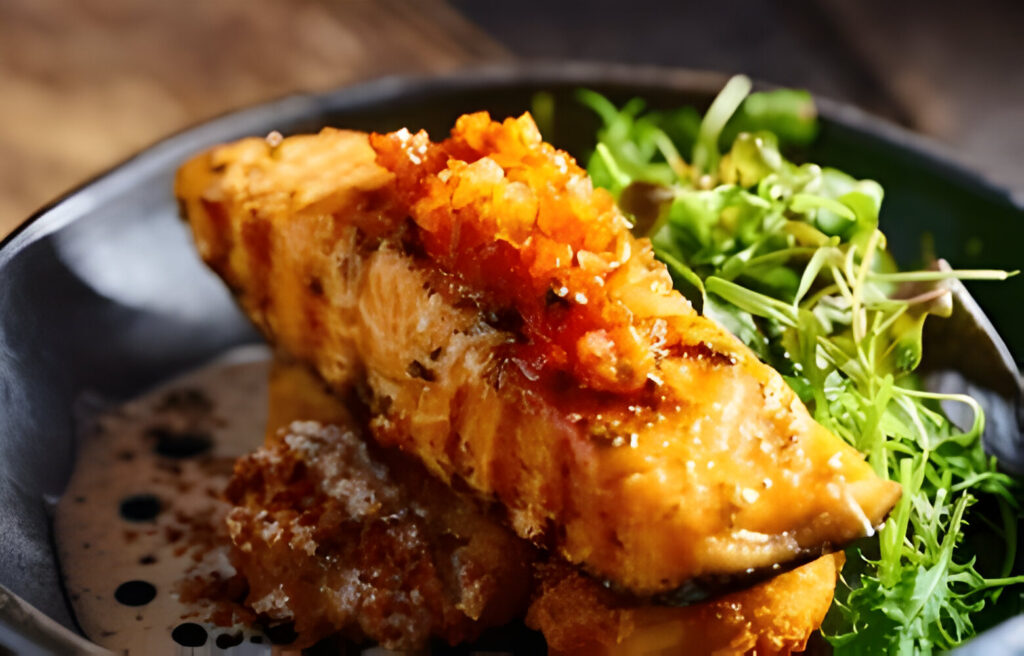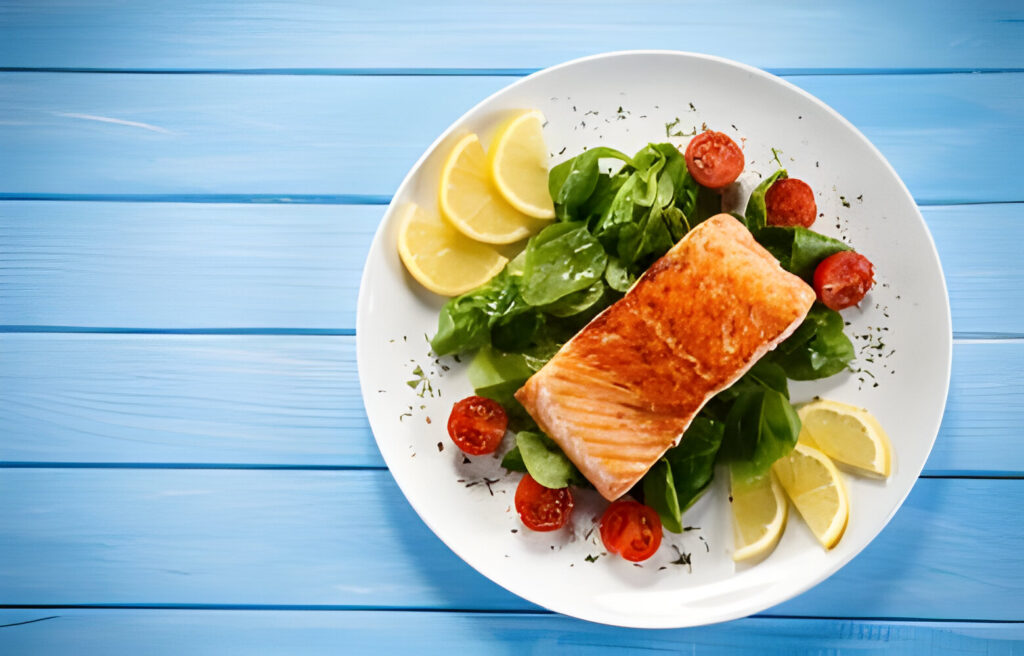
Introduction
Grilling salmon is both an art and a science, a delightful endeavor that rewards with rich, flavorful, and nutritious meals. Salmon, with its rich omega-3 fatty acids, stands out as a healthy and versatile fish that adapts beautifully to the smoky essence of a grill. However, one critical question often arises: How long should you grill salmon to achieve that perfect texture and taste? This guide embarks on a journey to demystify the process, ensuring your grilled salmon is nothing short of perfection.
Understanding Salmon and Grill Types
Before diving into the specifics, it’s essential to understand the types of salmon and grills, as these factors significantly influence grilling times. Salmon comes in varieties such as Atlantic, Pacific (King, Sockeye, Coho), and farmed, each offering unique flavors and textures. Grills, on the other hand, range from charcoal to gas and electric, with each providing different heat levels and cooking experiences.
Preparing Salmon for Grilling
Preparation is key to grilling success. Start with selecting fresh or well-thawed salmon fillets or steaks. Ensure the skin is on for extra flavor and to hold the fish together. Next, season your salmon to taste. A simple rub of salt, pepper, and olive oil enhances its natural flavors, but feel free to get creative with herbs and spices. Preheat your grill to a medium-high temperature, aiming for 375 to 400 degrees Fahrenheit, to ensure a hot, but not scorching, surface.
Grilling Time and Techniques
Now, the critical part: grilling time. A general rule of thumb is to grill salmon for 4 to 6 minutes per half-inch of thickness. For most fillets, this translates to a total of 8 to 12 minutes. Begin by placing the salmon skin-side down on the grill. Do not move it; let the grill marks form and the skin crisp up. After about 60-70% of the cooking time, gently flip the salmon to finish on the other side, allowing it to cook through while retaining its moisture and tenderness.
Preparing Your Salmon for the Grill
Choosing the Right Cut
Selecting the right salmon cut is crucial for grilling success. Look for fresh, high-quality fillets or steaks with vibrant color and firm texture. Fillets offer a more consistent shape for even cooking, while steaks can provide a more traditional grilling experience. Opt for skin-on pieces; the skin not only prevents sticking but also retains moisture, enhancing flavor.
Marinades and Seasonings
Marinades can transform your salmon, infusing it with flavor and moisture. Aim for a balance of acidity, oil, and herbs. Olive oil, lemon juice, and dill make a classic combination. However, avoid marinating for too long; the acid can start to cook the fish, affecting its texture. Thirty minutes to an hour is optimal. If you prefer dry rubs, a simple mix of salt, pepper, and your favorite herbs can do wonders. Remember, salmon’s natural taste is delightful, so moderation is key.
Preparing the Grill
A clean, well-oiled grill is essential to prevent sticking and ensure your salmon cooks evenly. Preheat your grill to a medium-high temperature before adding your salmon. This range is ideal for creating a crisp exterior while keeping the inside moist and tender. If using a charcoal grill, wait until the coals are covered in ash for consistent heat.
Conclusion
Proper preparation sets the stage for grilling excellence. By selecting the right cut, using marinades judiciously, and preparing your grill correctly, you’re well on your way to achieving perfectly grilled salmon. These steps not only enhance the flavor but also contribute to a seamless grilling experience. Remember, the goal is to complement the salmon’s natural richness without overpowering it, ensuring every bite is a testament to your grilling prowess.

Mastering the Grill Time and Techniques
The Ideal Grill Time
Determining the perfect grill time for salmon is key to achieving that succulent, flaky texture. A general rule is to cook salmon for 6-8 minutes per inch of thickness. This guideline ensures the salmon cooks through without becoming dry. Start with the skin side down, as it provides a natural barrier against the heat. After the initial 4 minutes, flip the salmon once to allow even cooking. Use a spatula for flipping to avoid tearing the flesh.
Direct vs. Indirect Heat
Understanding when to use direct or indirect heat can elevate your grilling game. For most salmon cuts, direct heat is preferable. It sears the exterior, locking in flavors and juices. However, for thicker cuts or whole salmon, start with direct heat then move to indirect heat. This method cooks the salmon evenly, preventing the outside from burning before the inside is done.
Utilizing Grill Accessories
Grill accessories, like a cedar plank or a grill basket, can enhance your salmon grilling experience. Cedar planks add a smoky flavor and prevent sticking, while grill baskets secure smaller pieces or prevent skin from tearing. Soak cedar planks for at least an hour before use to avoid burning. These tools not only improve flavor but also simplify the cooking process.
Conclusion
Mastering the grill time and techniques for salmon is essential for any grilling enthusiast. By adhering to the recommended cooking times, choosing the right heat method, and utilizing helpful grill accessories, you can ensure your salmon is perfectly cooked every time. These strategies not only improve the quality of your dish but also make the grilling process more enjoyable and stress-free. Remember, practice makes perfect, and each grilling session is an opportunity to refine your skills.
Identifying When Your Salmon is Perfectly Grilled
Visual Cues
One of the most reliable indicators that your salmon is perfectly grilled is its appearance. The flesh should change from a translucent, raw look to an opaque pink. Additionally, you will notice the proteins, known as albumin, start to coagulate and appear on the surface as white droplets. This is a natural process and a good sign that your salmon is nearly done. However, aim to remove the salmon from the grill before too much albumin forms, as this can signify overcooking.
Texture Testing
The texture of the salmon offers a tactile method for testing doneness. Gently press the top of the salmon with a fork or your finger. If the flesh flakes easily without falling apart, it’s ready. It should feel slightly firm but still give under pressure. Avoid cooking the salmon until it’s too firm, as this often means it’s overcooked and will taste dry.
Using a Thermometer
For those who prefer precision, a digital instant-read thermometer is your best friend. The USDA recommends cooking salmon to an internal temperature of 145°F (63°C) to ensure food safety. Insert the thermometer into the thickest part of the salmon for an accurate reading. Some chefs advocate for removing salmon from the grill at a slightly lower temperature, around 135°F (57°C), as the residual heat will continue to cook the fish to perfection.
Conclusion
Perfectly grilled salmon is within reach by observing visual cues, testing texture, and optionally using a thermometer. These methods provide a comprehensive approach to ensure your salmon is cooked just right. Remember, overcooked salmon loses its moisture and flavor, so err on the side of caution. With practice, determining when your salmon is perfectly grilled will become second nature, leading to delicious results every time.

Flavor Enhancements and Serving Suggestions
Adding the Finishing Touches
Once your salmon is perfectly grilled, it’s time to elevate it with finishing touches. A squeeze of fresh lemon juice right off the grill not only adds a zesty flavor but also enhances the salmon’s natural taste. Fresh herbs like dill, parsley, or cilantro can add a fragrant note. For a touch of sweetness, a glaze of maple syrup or honey in the last few minutes of grilling can create a delightful contrast.
Pairing with Sides
The right side dishes can turn your grilled salmon into a memorable meal. Opt for light, refreshing options to complement the richness of the salmon. A quinoa salad with lemon and herbs, steamed asparagus, or a simple green salad are excellent choices. For a heartier meal, consider roasted baby potatoes or a wild rice pilaf. Remember, the goal is to balance flavors and textures for a harmonious dish.
Wine Pairing
Choosing the right wine can enhance your grilled salmon experience. A crisp, dry white wine like Sauvignon Blanc or a Chardonnay pairs beautifully, cutting through the richness of the fish. If you prefer red wine, opt for a light-bodied, low-tannin option such as Pinot Noir. The key is to match the intensity of the wine with that of the salmon, ensuring neither overpowers the other.
Conclusion
The final steps of adding finishing touches, selecting the right sides, and pairing with wine are crucial for serving perfectly grilled salmon. These elements not only enhance the flavors but also transform the dish into a cohesive, delightful meal. By following these suggestions, you’ll elevate your grilled salmon from good to gourmet, impressing your guests and satisfying your palate. Remember, the art of grilling salmon is in the details, from preparation to presentation.
Safety and Clean-Up Tips for Grilling Salmon
Ensuring Grilling Safety
Safety should always be your top priority when grilling. Always preheat the grill to avoid sudden flare-ups and keep a spray bottle of water handy for any unexpected flames. Use long-handled utensils to maintain a safe distance from the heat. Moreover, never leave the grill unattended, especially when cooking on high heat. Keeping these practices in mind ensures a safe grilling environment for everyone around.
Cleaning the Grill
A clean grill is essential for health and optimal performance. After grilling, while the grill is still warm, use a grill brush to remove any salmon skin or residue from the grates. This step prevents sticking and ensures a clean surface for your next grilling session. For a deeper clean, occasionally remove the grates and soak them in soapy water, scrubbing away any stubborn particles.
Storing Leftover Salmon
Proper storage of leftover salmon is crucial for maintaining its quality and safety. Allow the salmon to cool to room temperature for no more than two hours before refrigerating. Store it in an airtight container and consume within two days for the best taste and texture. This practice prevents bacterial growth and ensures the salmon remains delicious for your next meal.
Conclusion
Grilling salmon safely and efficiently requires attention to detail, from the initial preparation to the final clean-up and storage. By following these safety, cleaning, and storage tips, you ensure a pleasurable grilling experience and maintain the quality of your salmon. Remember, the key to perfect grilled salmon lies not only in the cooking technique but also in the care and consideration applied throughout the entire process. Enjoy the fruits of your labor with the peace of mind that you’ve grilled safely and responsibly.
Conclusion: How Long to Grill Salmon
Grilling salmon to perfection is an art that combines the right preparation, cooking techniques, and finishing touches. From choosing the right cut and preparing it with flavorful marinades to mastering grill times and techniques, each step is crucial for achieving that succulent, flaky texture. Identifying when salmon is perfectly grilled, enhancing its flavor with the right accompaniments, and ensuring safety and cleanliness throughout the process are all integral to the experience. By adhering to these guidelines, you can elevate your grilled salmon from merely good to truly gourmet. Embrace these tips and techniques to impress your guests and enjoy the delicious rewards of your grilling prowess.
Frequently Asked Questions (FAQ)
Q: How long should I grill salmon?
A: Grill salmon for 6-8 minutes per inch of thickness, starting skin-side down on medium-high heat.
Q: Can I grill salmon without the skin?
A: Yes, but grilling with the skin on helps retain moisture and prevents sticking. If you prefer skinless, use a well-oiled grill or a grill mat.
Q: What temperature should salmon reach to be considered done?
A: The USDA recommends an internal temperature of 145°F (63°C), but many chefs suggest pulling it off the grill at 135°F (57°C) for a slightly more tender texture.
Q: How can I prevent my salmon from sticking to the grill?
A: Ensure your grill is clean and preheated. Oil the grill grates or the salmon skin lightly before grilling.
Q: What are some good seasonings for grilled salmon?
A: Simple seasonings like salt, pepper, lemon, and dill enhance salmon’s natural flavors. For more depth, try a marinade or glaze with ingredients like soy sauce, honey, or ginger.
Q: How do I store leftover grilled salmon?
A: Cool the salmon to room temperature, then store it in an airtight container in the refrigerator. Consume within two days for best quality.
More Articles From Recipes Maya: